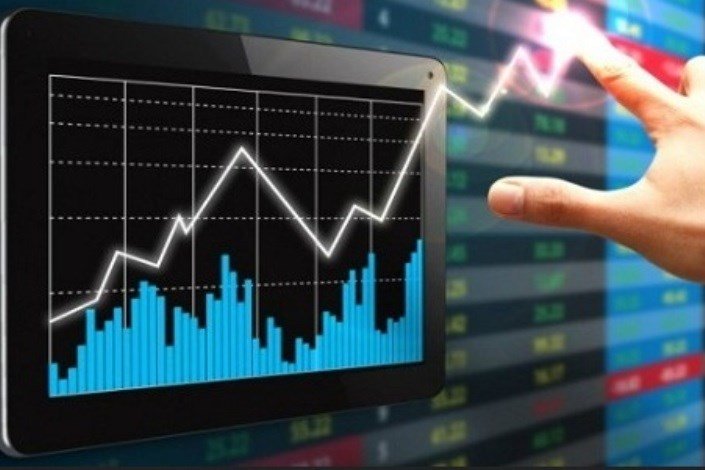Capital market unfazed by economic problems

TEHRAN- Tehran Stock Exchange (TSE)’s main index (TEDPIX) gained 3,058.12 points or 1.97% on Saturday to end trading at 158,119.2. About 4.16 billion shares valued at $120.88 million changed hands at TSE for the day. The index added 3,000 points to reach 158,000.
On the same day, IFX, the main index of Iran’s over-the-counter (OTC) market, known also as Iran Fara Bourse (IFB), gained 34.32 points or 1.94% to close Saturday trade at 1,805.58. About 1.52 billion securities valued at $72.39 million were traded at the over-the-counter exchange for the day.
Share trading on Wednesday started with a bang, as TSE made a 6,000-point jump in the first hour of the trading day alone, exceeding 155,000 points by the end of the day to register a historic high. By the end of the trading day, TEDPIX had gained 6,483.46 points or 4.36% to end trading at 155,061.1. IFX ended up 75.28 points or 4.44% to close at 1,771.25 on that day.
The rising trend of TEDPIX began on June 13, which was named ‘Golden Wednesday of Stock Market’, when TEDPIX gained 2,767 points to stand at 99.146 points. Then on June 17, players in Iran’s capital market witnessed a historic record in growth of TEDPIX which gained 3,306 points to hit 102,452 points, something unprecedented in the 50-year history of the country’s stock market.
Capital market indices have generally experienced a positive trend since then.
This happened under the conditions that domestic markets are awaiting the new wave of U.S.-led sanctions in November, following being hit by the first round of sanctions posed in early August.
According to the Central Bank of Iran’s latest data, liquidity stood at 16.02 quadrillion rials (about $381.4 billion) during the fourth month of the current Iranian calendar year, Tir, (June 22- July 22), which shows 20.1 percent growth in comparison with the same period in the preceding year.
Meanwhile, the Statistical Center of Iran announced that the inflation rate in the twelve-month period ended on the last day of the fifth Iranian calendar month, Mordad, (August 22) stood at 9.7 percent, showing one percent rise on month. Although many believe the rate is much higher than the announced figure.
Although Iran’s economy is experiencing a series of problems including stagnation, high inflation and unemployment rates, but capital market indices open in green and hit record high.
The growth can be explained regarding the dominant recession on other domestic markets, which has guided a big sum of liquidity from other markets such as auto, foreign currency, housing and coin to the capital market.
The government’s recent focus on supporting and expanding the capital market, can also explain the recent jump in indices.
The low tax rate, liquidity transparency, and other provided instruments by the government has presently given the investors in the capital market the confidence about low liquidity risk in the stock market and has led to attraction of a large volume of capital and expansion of trade and cooperation among private companies.
Export-oriented companies such as petrochemical, steel and mining companies whose products are priced at higher rates at the capital market, can presently benefit from higher profit margin in comparison with other companies and their presence in the stock exchange market can boost domestic production and job creation.
In case the required infrastructure in the capital market is improved, higher growth and more trades are predictable in the capital market but the growth makes some concerned since it is merely witnessed in the capital market but not in other ones.
Some express concern that due to the leading recession on economy, existing inflation, the unclear future of the nuclear deal, known as JCPOA, which has a high impact on domestic markets including the capital market, the experienced upward trend and record breaking of the capital market indices should not be considered as an ongoing one in the long-run.
HJ/MG
